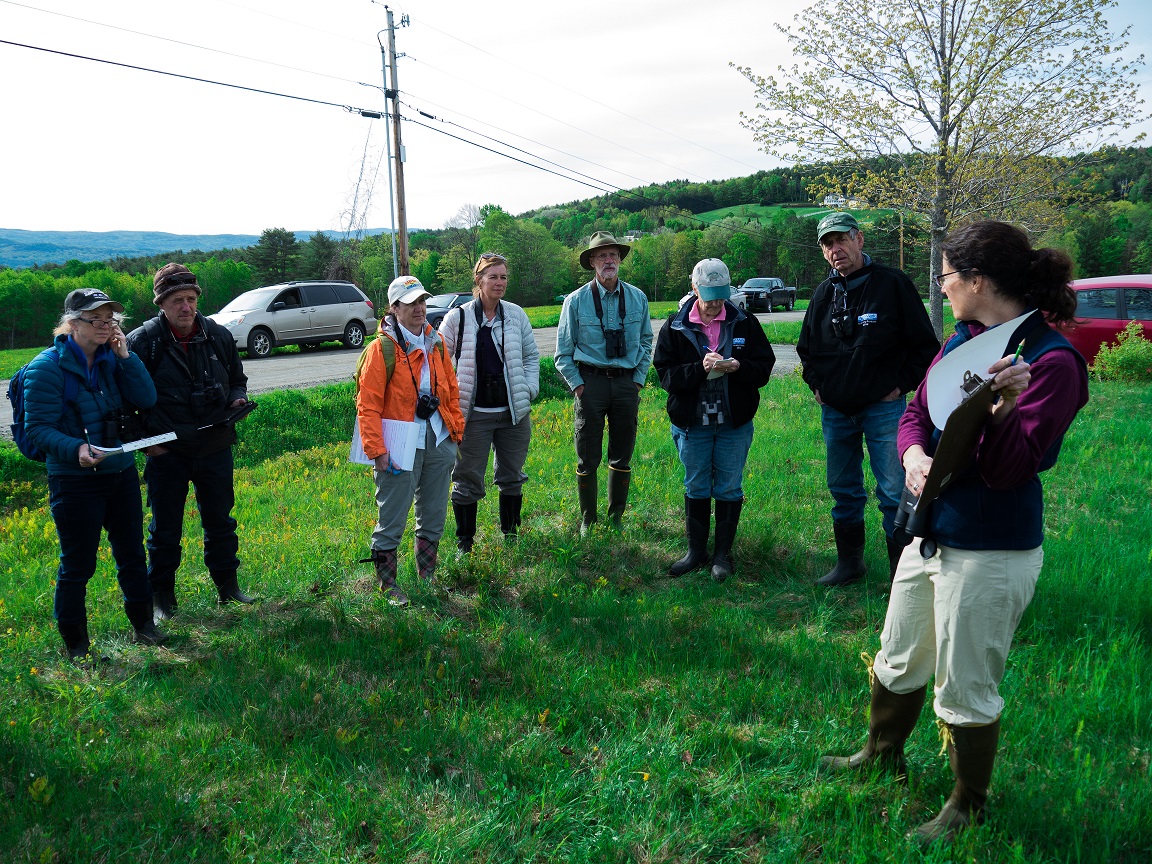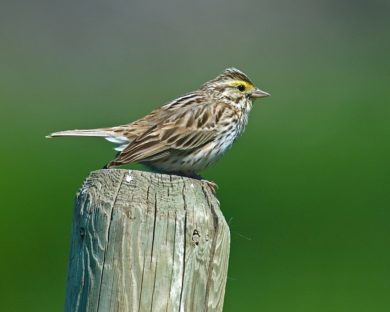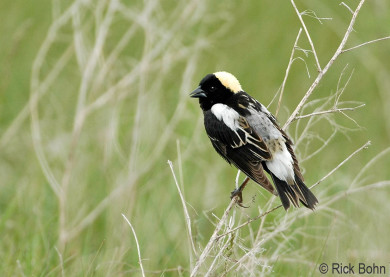
Rosalind Renfrew (right) talks with VT and NH landowners about monitoring the grassland birds on their own lands. Photo courtesy Liza Morse.
The Northeast’s open agricultural fields and grassy meadows are irresistible habitat for grassland birds, whose populations have been declining for decades—even in the heart of their range in the Midwest, where open lands are abundant. Landowners often unknowingly control the fate of these migratory birds, and the possibilities for providing grassland bird nesting habitat vary from one piece of land, and one landowner, to the next.
In mid-May, VCE held a workshop for landowners interested in learning about and conserving grassland birds living in their hayfields. While VCE has been working with landowners to promote conservation of grassland birds, this spring marks the next step: adding grassland bird monitoring techniques to the landowners’ portfolio.
The goal of the seminal workshop, led by VCE biologist Rosalind Renfrew and supported by VCE grasslands outreach specialist Cathryn Abbott and Eco AmeriCorps member Liza Morse, was to show landowners how to identify and monitor grassland birds in their hayfields and meadows. Training included how to count Bobolinks and Savannah Sparrows and submit their observations into eBird, a database of bird sightings powered by citizen scientists. The data entered by landowners will be used by VCE to help understand and conserve grassland bird species and will be openly available for use by other conservation groups.

Savannah Sparrow. © R. Renfrew
Additionally, monitoring data will help landowners better understand the birds on their own land. Armed with the knowledge of which and how many bird species call their hayfields home, landowners can provide critical nesting habitat by adjusting their grazing or mowing schedules to give ground-nesting birds like Bobolinks enough time to raise their young.
Program director Rosalind Renfrew is confident that these “grassland ambassadors” can make a difference for the birds. “Our aim is to give landowners an opportunity to really get to know the very birds they’re helping, all the while contributing to science,” explains Renfrew. “My hope is that landowners will feel sheer gratification as they get to know the birds that thrive because of their management practices.”

Bobolink / © Rick Bohn
In this pilot phase, program requirements are flexible to allow landowners to participate according to their level of interest and capacity. Participants are asked to count birds and report findings to eBird at least once annually during breeding season, but multiple counts each year will provide a more accurate picture of bird population numbers.
How will the program’s success be determined? “Landowners do the counts, report their findings in eBird, and provide feedback about how we can improve so we can expand the effort next year. Also, success means the landowners learn more about ‘their’ birds,” states Renfrew. VCE is conducting this pilot effort with an intent to expand workshops to other interested landowners in northern New England.
You can keep abreast of grassland bird conservation projects on the VCE Grasslands website.
